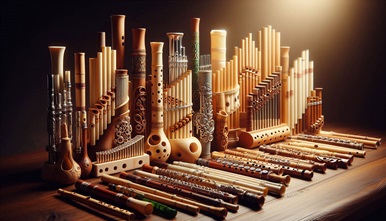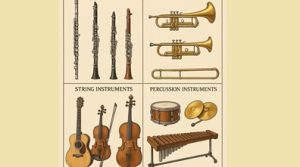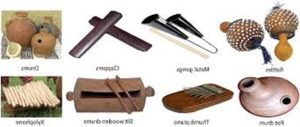Pan Flute Selection Guide: Tips for Perfect Instrument
Pan Flute Selection Guide: Tips for Choosing the Perfect Instrument
The right pan flute should balance comfort, looks, and function.
Beginners or advanced music professionals need to understand what features should fall in place to meet their requirements before making a purchase decision.
Pan Flute Selection Guide:
- Consider Your Skill Level
Your experience determines mainly what determination you would want to give your pan flute.
Beginners look to easy, cheap panpipes; no extra bucks should be spent on top-of-the-range instruments if you’re just starting.
Professional or advanced musicians might be looking into superior quality and rather more expensive and professional pan flutes that offer better tonal precision and construction quality.
For novice players who are yet to start, a basic model will work fine. For experienced players, however, a finely crafted instrument with greater acoustic properties will prove worthwhile.
- Decide on the Number of Pipes
Pan flutes vary in number from 5 to 15 pipes and each will produce its unique sound.
A smaller pan flute (up to two octaves) makes it relatively easier to move between pipes and learn faster.

A larger panel for the flute (above two octaves) affords more musicality but requires highly developed techniques.
For instance, a novice should work with a smaller instrument to ensure easier learning, with expert pan flutists exploring wider tonal ranges with more pipes.
- This is the part you would like to ‘tunable’ or ‘non-tunable’ pan flute
Tunable and non-tunable pan flutes are the two distinct forms in which pan flutes come.
Tunable pan flutes have pitch adjustment capabilities depending on the song or sheet music that you are playing, making them ideal for a beginner-the beginner will just have to adjust to understanding what the music sheet tells them.
Non-tunable pan flutes keep a fixed pitch and it could only be retuned manually by very experienced musicians at the time of playing.
For all purposes of value, tuning flexibility stands ideal for a tunable pan flute, particularly for those who are still learning to control their pitches.
- Wax vs. Cork Tuning Methods
Pan flutes can be tuned using wax or corks for each method’s different advantages.
Wax-tuned pan flutes are easier to retune and keep tuned.
Cork-tuned pan flutes are difficult to adjust and don’t allow for as much flexibility with tuning.
Some pan flutes feature slides at the end for easy modification of the key. Wax tuning is preferred in terms of rapidity and preciseness.
- Ergonomic Shape for Comfort
Firstly, a pan flute fits best in your hands and is designed to work with the way your head moves.
Well, whether it be curved pan flutes and such, they would follow the head’s moves, hence you get a very comfortable situation in playing them.
Some of the “straight” pan flutes also commit to ergonomics, as per the particular design.
Lastly, an ergonomic shape enhances playability and reduces strain during extended playing times.
- Aesthetic Value
And, of course, apart from functionality, appearance does count: string quality alone cannot make it beautiful and durable.
What else should a good pan flute contain but: Suitable for making the best string sound, as in price, plus some special decoration.
- Handmade vs. Mass-Produced Pan Flutes
A handmade pan flute created by a master craftsman is of remarkable quality with good tunings and durability.
Each pipe is painstakingly crafted to provide a rich and harmoniously toned result, even for the most serious of musicians.
However, production models of pan flutes are likely to be poorly tuned and the sound quality can be questionable from flute to flute.
Good choice-making rules imply a handmade version if your aspiration is for an instrument that genuinely enhances your playing experience.
- Construction Consistency
Construction consistency is one major player determining the sound and performance of the pan flute.
A good-quality flute is characterized by pipes that are homogenous concerning their size, space distance, and type of material used.

Any irregularities from one pipe to the other can cause tone inconsistencies, making it difficult to achieve a smooth and melodic flow.
- Best Materials for Pan Flutes
Of the various materials used for the construction of the pan flute, bamboo is still the first choice among many.
In many respects, bamboo provides an ideal resonance, durability, and traditional appeal. Bamboo produces warm, earthy tones, while the instruments themselves are good to look at.
Reeds, metal, and ceramic are equal contenders but all of them present their own specificities. For example, when we talk about ceramics or clay pan flutes, although they might sound quite differently, they are very much breakable.
- Size and Weight Considerations
The playability of a pan flute is affected directly by size and weight. A heavy and oversized pan flute can be unwieldy for beginners and younger players.
However, a light instrument will be easier to hold and manipulate for someone still developing technique.
If comfort and playability are high on the list of concerns, then a well-balanced pan flute that supports good ergonomics will serve one best.
Pan Flute Selection Guide: Types of Pan Flutes Around the World
Various kinds of pan flutes have been fashioned in communities according to their peculiar design, construction, materials, and playing ways.
- European Pan Flutes
European pan flutes descend from the ancient Greek instrument called syrinx. Over the ages, different countries have fashioned their versions.
Nai (Romania): This curved pan flute, developed in the 17th century, is sheepishly accepted to be played in later bands. Famous names like Gheorghe Zamfir and Damian Draghici command respect with the Nai. It usually has 22 pipes made of reeds or bamboo that produce a great tonal range.
Muskal (Turkey): The Muskal is another European pan flute. It is structurally very similar to the Naia pan flute but does differ in tuning and playing technique found there.
- Andean Pan Flutes
Pan flutes are considered even further with cultural heritage in South America, especially in Andean music. The most famous of the Andean pan flutes are as follows:
Antara: Originally from the indigenous tribes of the Amazon, this instrument consists of 13 bamboo pipes, slightly curved, each producing its own.
Siku: This type of flute is played in pairs by two musicians, each playing different notes to form a full melody. Usually, in the traditional Siku orchestras in Peru, Bolivia, Chile, and Argentina, 12 players create a socializing occasion.
- Chinese Pan Flutes (Paixiao)
China’s history of pan flute music is also relatively rich, and paixiao is one of the oldest types.
Having thereby gained much popularity throughout the Tang Dynasty, the instrument remains one of the staple presentations within Chinese folk music.
- Wot (Thailand and Laos)
The Wot is a small and very gracefully formed pan flute used by folk musicians in Thailand and Laos. Usually, it is made of bamboo with 13 pipes which can produce four different notes. The Wot comes in several variants: circular, flat, end-blown, and end-blown with a tilt, all offering different sounds and techniques to play.
- Larchemi (Georgia)
Once widely distributed in Lazeti, Imereti, and Abkhazia, the ancient Georgian pan flute Larchemi almost went out of existence by the 1960s. Six reed pipes arranged in the transverse plane characterize this instrument mostly used among Georgian folk music traditions.
Pan Flute Selection Guide: Pan Flute Brands at a Glance
A good brand is more likely to guarantee that a pan flute has been made with quality craftsmanship to bring out a great sound. Some of the best-known brands are:
Peru Treasure – Handmade in Peru, this flute honors ancient Incan musical tradition.
Moon Angel is mostly appreciated for their well-tuned and beautifully crafted instruments.
Wind Melody Panpipes – Works for new learners and advanced musicians alike.
Inka Tumi Bamboo Panpipes – Offers traditional and modern styles of pan flutes.
Pan Flute Selection Guide: Price Range of Pan Flutes
Prices of pan flutes vary greatly depending on craftsmanship, materials, and brand.
Budget: Less than $10 (basic models good for beginners)
Mid-Range: $19-$60 (better quality good for serious learners)
Premium: From $100 (for professional handmade flutes)

Questions People Frequently Asked on Pan Flute Selection Guide
How Does a Pan Flute Work?
Sound is produced by blowing horizontally on the open ends of the tubes.
The resonance of each of the tubes occurs at different frequencies to produce different musical notes.
Players can affect pitch alterations through tricks like tilting the panpipe, breath pressure adjustments, and more sophisticated techniques namely hand banner and breath vibrato.
Where Did Pan Flutes Originate?
Pan flutes go thousands of years back into history with origin points given in ancient Greece, South America, China, and elsewhere.
The instrument evolved probably from the early humans’ exploration of blowing through hollow stems of plants.
As different cultures advanced, emerged designs leading to the myriad pan flutes we see today.
What Is the Best Pan Flute Brand?
Peru Treasure is recommended as one of the finest pan flute brands. These instruments are handcrafted in Peru and symbolize the cultural heritage of Incan music.
They remained a very strong option for the pan flute players, both beginners and professionals, due to fine craftsmanship and good sound.
Is a Pan Flute a Woodwind Instrument?
Yes, because the sound is produced with the vibration of air within the pipes, the pan flute is placed under woodwinds.
The sound production in woodwinds uses air vibration, while the thumb is on the mouthpiece.
The brass instruments use slide and valves. In a pan flute, breath control and pipe length are the only things that determine pitch.
Closing Thoughts on the Pan Flute Selection Guide
There are many factors whether it is the quality of construction and materials, size, and tuning features to be taken into consideration regarding the selection of instruments.
Whichever options suit your skill level: be it a beginner or a more professional-oriented flute, obtaining a good pan flute will surely make a better performing experience as well as take you into the charming world of panpipe melodies.





